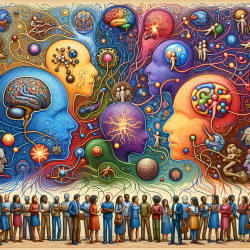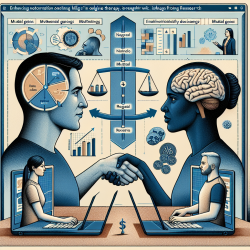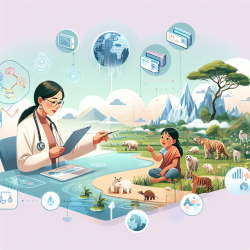In the realm of special education and therapy, understanding the intricate dynamics of human social behavior can significantly enhance practitioners' effectiveness. The research article "Human Group Identity: Language and a Social Mind" by Luis P. Villarreal offers profound insights into the evolution of human group identity, emphasizing the pivotal role of language and social mind in shaping our interactions. This blog explores how practitioners can leverage these insights to improve their skills and encourage further research.
The Evolutionary Shift to a Social Mind
The research highlights a critical evolutionary shift in primates, particularly humans, from olfactory-based group recognition to a vision-based system. This transformation was driven by significant brain developments that enhanced visual information processing for social purposes. In humans, this evolution continued with the development of emotional memories linked to visual stimuli, extending social bonds beyond immediate family to larger groups.
The Role of Language in Group Identity
Language emerged as a novel form of group identity, providing an audio-based social bond that transcended genetic ties. The recursive nature of human language required an expanded brain capacity and facilitated abstract thinking. This linguistic evolution allowed human populations to develop diverse group identities based on learned language, liberating social structures from genetic constraints.
Harnessing Emotional Bonds in Therapy
Practitioners can draw on these insights to foster stronger emotional bonds with clients. Understanding that emotional memories are stored visually and auditorily can guide therapists in creating more impactful interventions. For instance:
- Utilize Visual Cues: Incorporate facial expressions and gestures in therapy sessions to enhance emotional connections.
- Leverage Language: Use storytelling and metaphors to engage clients emotionally and cognitively.
- Encourage Vocal Expression: Facilitate vocal exercises or singing to strengthen emotional bonds between clients and their support networks.
The Practitioner’s Path Forward
To fully harness the potential of these insights, practitioners are encouraged to delve deeper into the research on group identity and social mind. Engaging with interdisciplinary studies on language evolution, emotional content, and mirror neurons can provide a more comprehensive understanding of human behavior. Networking with peers through conferences and webinars can also offer valuable perspectives and collaborative opportunities.
The journey toward mastering these concepts is ongoing, but the rewards are substantial. By integrating these evolutionary insights into practice, therapists can foster more profound connections with clients, ultimately enhancing therapeutic outcomes.
To read the original research paper, please follow this link: Human Group Identity: Language and a Social Mind.










